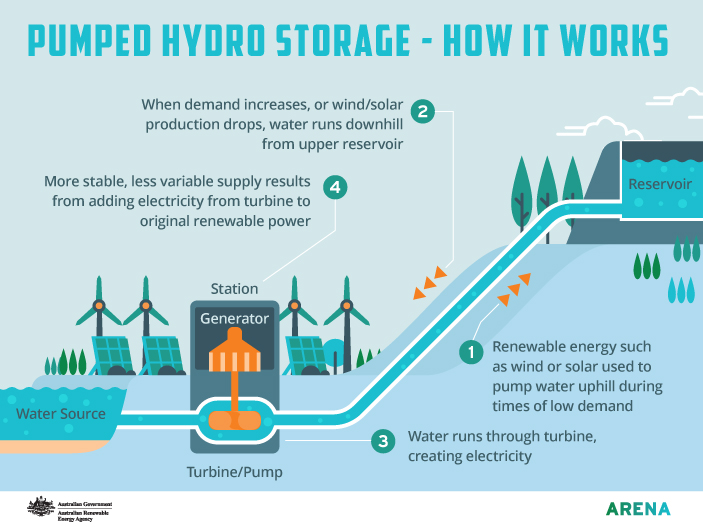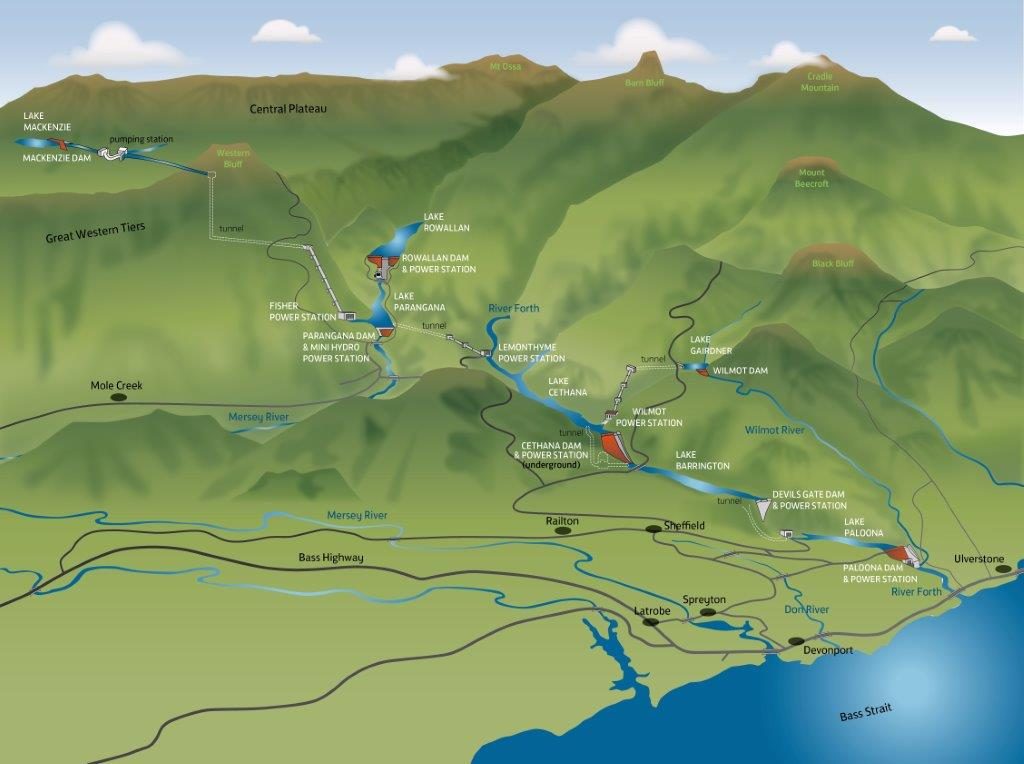Can Tasmania be ‘the battery of the nation?’ It’s an idea that holds a lot of power
Can Tasmania be the “battery of the nation”? And if so, what would that mean?

Back in April, in the wake of Prime Minister Malcolm Turnbull’s pledge to develop Snowy Hydro 2.0, the PM joined Tasmanian Premier Will Hodgman for a less heralded joint press conference in Launceston, where they talked just as enthusiastically about the future of Hydro in Tasmania.
By spending $3 billion, Mr Turnbull said, the island state’s scheme could be expanded to add enough pumped hydro storage capacity to the National Electricity Market (NEM) to run half a million homes.
“It is a huge opportunity,” the Prime Minister said. “The energy market is progressing, the evolution of it is very rapid, so I think the sooner we can see the opportunities here in Tasmania, the better.”
The commitment itself was for an investigation. ARENA dedicated $2.5 million to help state-owned Hydro Tasmania examine the feasibility of expanding two power stations, building up to 15 pumped hydro projects and assessing the role of Tasmania in the future NEM. Pumped hydro involves using excess electricity at times of low demand to pump water up hills. It is stored until times of high demand, when it is released to flow back down through turbines, generating electricity.
Five months on, the first two projects have been scoped, with studies promised by the end of the year. The first is considering a complete rebuilding of the 79-year-old Tarraleah power station, in the central highlands, and the addition of an extra turbine at the much younger Gordon power station, in the south-west. An early estimate suggests the Tarraleah expansion could cost $750 million and boost generation capacity by 200 gigawatt hours a year.
The second will look at a significant expansion of pumped hydro in the state – up to 15 new storage sites with a combined potential capacity of 2.5 gigawatts.
On a site visit to Cethana Power Station, alongside the Tasmanian Premier, ARENA Chief Executive Ivor Frischknecht said these studies would examine how pumped hydro could play an expanded role in Australia’s energy mix.
“With these projects, we could more than double Tasmania’s hydro capacity and power an additional 500,000 households,” he said. “Tasmania could play a crucial role in helping to provide secure, reliable – and renewable – electricity for the National Energy Market.”

This would be no small thing. While the Snowy Hydro has a storied place Australia’s national mythology, Tasmania’s hydro network is no less important and actually generates more electricity.
It is used mostly for baseload generation, providing more than 80 per cent of the electricity generated in the state. By contrast, the Snowy is mainly used as a peaking plant, called on at times of high demand. It means that, while Hydro Tasmania has only half the generation capacity of Snowy Hydro, it produces about twice as many electrons.
Chris Twomey, ARENA’s investment manager, says one of the questions to be considered is whether the way Hydro Tasmania’s plants operate needs to change to play a new role in a transformed future electricity grid – and, if so, whether they are capable of making that change. Specifically, will it still be needed as a baseload generator in a system of increased variable renewable energy backed by dispatchable generation – demand response, lithium ion batteries, peaking gas plants and pumped hydro – that can be called on when needed?
“One of the questions being asked is ‘how do we best use hydro systems in a high penetration renewable energy market?” Mr Twomey says. “If we want this to be relevant energy source that is applicable to a modern National Electricity Market (NEM) these assets need to be looked at in this context.”
READ MORE: HOW PUMPED HYDRO COULD HELP SOLVE THE STORAGE PROBLEM
This is the other part of the Hydro Tasmania “battery of the nation” project – effectively, a complete re-think of its business model. This third feasibility study, the details of which are being finalised, will take a big picture view of whether Tasmania could play an expanded role in the National Electricity Market that includes not just pumped hydro, but also a bank of wind farms in the north of the state to capture the roaring ‘40s – the best wind resource in the country – and a second interconnector linking the state to the NEM.
The possibility of a second connection across Bass Strait was examined in a report earlier this year by former Australian Energy Market Commission head John Tamblyn. The report made clear that the viability of a second interconnector, with an estimated cost of $1.1 billion, was dependent on a number of factors. The answer ultimately turned on the assumptions you make about other changes in the electricity grid and forms of generation in the years ahead. But Dr Tamblyn found it would likely improve reliability of supply in Victoria and Tasmania, and boost the viability of new Tasmanian wind farms.
READ MORE: PROFESSOR ANDREW BLAKERS ON HIS PUMPED HYDRO ATLAS PROJECT
Mr Twomey says: “It would be a big opportunity for Hydro Tasmania to play a key role in the provision of energy storage capacity to the national electricity market.
“What we’re looking at here is a future NEM where you have high levels of renewable energy penetration combined with flexible capacity and storage. Could Tasmania be the cheapest way to address that?”
The first stages of the feasibility studies are due before the end of the year.

This article was originally written by Adam Moreton, Writer.
LIKE THIS STORY? SIGN UP TO OUR NEWSLETTER

ARENA